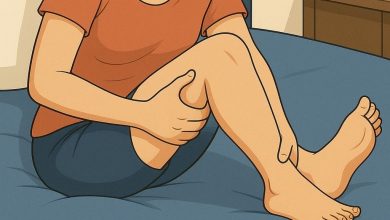Is Your Home Secretly Making You Sick? Look for These 7 Warning Signs

Are you feeling under the weather more often than not, and can’t quite pinpoint why? It’s possible your living or working space could be playing a significant role in how you feel. This phenomenon is often referred to as Sick Building Syndrome (SBS), a concept first recognized by the World Health Organization (WHO) back in 1983. SBS describes a situation where people experience various health problems that seem to be directly linked to the time they spend inside a particular building, yet no specific illness or cause can be easily identified.
ADVERTISEMENT
Understanding the Subtle Signs Your Environment Could Be Affecting You
It’s truly eye-opening to realize that the very places we spend the most time in – our homes and offices – could be quietly impacting our well-being. If you’ve been grappling with unexplained health issues, it’s worth considering if your building is “making you sick.” The symptoms associated with SBS can be quite varied and might easily be mistaken for other common ailments.
ADVERTISEMENT
Common Ways Your Building Might Be Telling You Something’s Wrong
The signs of SBS can manifest in many different ways, affecting various parts of your body and even your mental state. If you notice a cluster of these symptoms, especially when you’re in a particular building and they seem to lessen when you’re away, it could be a clue.
ADVERTISEMENT
Here are some of the most frequently reported symptoms:
- Skin irritations: You might experience unexplained skin rashes or persistent itchiness.
- Persistent fatigue: Feeling fatigue and body aches that don’t go away even with rest.
- Breathing difficulties: Issues such as coughing, wheezing, or other respiratory problems.
- Headaches: Frequent or recurring headaches that don’t have an obvious cause.
- Eye and throat discomfort: Experiencing dry or irritated eyes and throat.
- Sleep and mood disturbances: Having poor sleep, feeling increased anxiety, or struggling with difficulty concentrating.
Hidden Factors in Your Environment That Can Contribute to SBS
What exactly in a building can lead to these health concerns? There are several potential culprits, ranging from microscopic organisms to the very air we breathe. Identifying these can be the first step towards creating a healthier environment.
Here are some common factors that can contribute to Sick Building Syndrome:
- Unwanted growth: The presence of mold & fungus in damp or poorly ventilated spaces is a major concern. These can release spores that irritate airways and trigger allergic reactions.
- Invisible chemicals: Exposure to various chemical substances can be detrimental. This includes fumes from cleaning products, fresh paint, new furniture, or even pesticides used in or around the building.
- Stagnant air: Poor air quality and lack of fresh airflow mean that indoor pollutants can build up, leading to a stale and unhealthy atmosphere.
- Imbalanced moisture: Unbalanced humidity – whether the air is too dry or too humid – can affect your skin, hair, and respiratory system, making you uncomfortable and susceptible to irritation.
- Constant disturbances: Noise pollution, even if it’s not overtly loud, can lead to fatigue, sleep issues, and even heart problems over time by keeping your body in a state of stress.
- Inadequate lighting: Harsh lighting or lack of natural light can disrupt your body’s natural sleep-wake cycle and negatively impact your focus and mood.
- Neglected systems: Dirty HVAC systems, dust, droppings, or other indoor pollutants can circulate throughout the building, spreading allergens and irritants.
Taking Action: Immediate Steps to Improve Your Indoor Environment
The good news is that there are often practical steps you can take to alleviate some of these issues and improve the healthiness of your indoor space. Even small changes can make a big difference!
Consider these short-term solutions:
- Boost air circulation: Make an effort to improve ventilation by opening windows regularly or using fans.
- Opt for gentler cleaners: Switch to natural, low-toxicity cleaning products to reduce chemical exposure.
- Bring in nature: Add air-purifying plants (like aloe vera or ivy), which can help filter toxins from the air.
- Regulate moisture: Use humidifiers/dehumidifiers as needed to maintain comfortable indoor humidity levels.
- Block out distractions: If noise is an issue, try noise-cancelling headphones in loud spaces to create a quieter personal environment.
- Optimize your lighting: Maximize natural light during the day and update artificial lighting to be softer and more aligned with natural light cycles.
When a Bigger Change Might Be Necessary: Long-Term Considerations
While many issues can be addressed with the solutions above, sometimes the environment is simply not conducive to good health, even after making significant adjustments.
- If your symptoms persist despite making diligent changes to your home or office environment, then “moving to a different home or office may be necessary” as a more permanent “long-term solution.” This can be a significant decision, but your health and well-being are paramount.
An Important Reminder About Your Health
It’s crucial to remember that the information provided here is for general awareness and to help you consider potential environmental factors. It is not a substitute for professional medical advice or diagnosis. “Always consult a doctor about your health concerns” to get a proper evaluation and personalized guidance.




